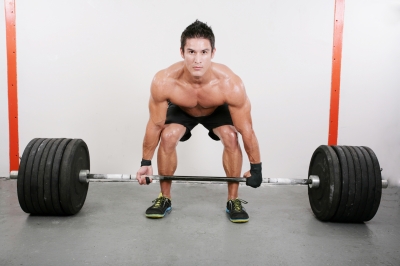Beefy Limbs: Lifestyle and Exercise Essentials for Muscular Legs

Free image courtesy of FreeDigitalPhotos.net/by David Castillo Dominic
Of all of the body parts that people train, the legs seem to be the most ignored. People in the gym will rep out the bench and do 1,000 bicep curls before they step into the squat rack to do, you know, squats.
But, building leg and hip strength builds the foundation for all of your other lifts. So, if you want to be stronger in pretty much anything else, you need to develop your legs. Here’s how to do that.
Food and Rest
There’s no magic when it comes to food and rest. If you want bigger legs, you need to eat well and sleep a lot. Food should be restricted to nutrient-dense items like sweet potatoes, regular potatoes, beans, lentils, fatty cuts of meat (especially beef liver), and milk (if you tolerate it). Try to increase your calories by 500 each week until you start seeing the scale move. Focus on getting between .64 and .84 grams of protein per pound of bodyweight. That’s it.
Aim to get 8 to 9 hours of quality sleep every night.
Back Squats
Back squats train the legs like no other exercise. Sure, people try to sneak leg presses into the training routine, but the squat gives you usable leg strength by training something no other lift can: hip drive.
Hip drive is the force you generate through your hips to drive the bar up out of “the hole” at the bottom of the squat. It’s what’s responsible for creating those thick quads, hamstrings, and glute muscles you see on power-lifters. It also allows you to use more muscle than if you relied primarily on the quads at the bottom of the lift.
You see, the squat is nothing more than sitting down and standing up while balancing a barbell on your back. And, while that might sound like a simple thing to do, it’s not. As weight gets piled onto the bar, it becomes harder and harder to maintain balance and generate force to stand back up after you’ve sat down.
If you’re looking for the holy grail of instruction on this lift, look no further than the veteran power-lifter Mark Rippetoe. He has, arguably, the best analysis on the squat that has ever been written.
One of the trickiest things for newbies to learn is the correct bar position. With the squat, it’s common to see people place the bar on top of their traps. This is a confusion that has been passed around the gym, fostered by early bodybuilders and power-lifters who didn’t really know how to place a bar on their backs, despite becoming very strong in the lift.
Where real strength is developed, and where there’s more stability (and thus a reduction in the risk of being injured) is on the top of the rear deltoids. Here’s a video that shows you how to get the bar position correct.
You’ll also need to learn the Valsalva maneuver, so that you can increase intra-abdominal pressure, protect your low back, and have the strength you need to complete the lift.
Front Squats
The front squat is a variation on the back squat, where the bar is placed on the front deltoids, and you squat with a more upright back angle. If you want to learn how to squat in this style, GymJunkies has a few good tutorials about the lift, as well as some interesting routines you could try next time you’re at the gym.
Front squats use primarily the quad muscles, since the back angle is more upright and there’s not much the hips or hamstrings can do, mechanically speaking. Knees travel farther forward than in the back squat, which creates a moment arm that places stress on the knees.
Moment arms are essentially levers, and you have to be careful doing the front squat that you do not “max out” your lift or try to lift “heavy” because the knee simply cannot take the forces generated in the front squat. This movement is really good for building quads, and is a good supplemental exercise to the back squat.
Conventional Deadlifts
The conventional deadlift is the king of lifts for the back, but it’s also an excellent way to train the legs. A lot of weight can be moved in the deadlift. This analysis shows you how to perform the move safely.
The deadlift relies on the hamstrings and glutes to move the weight, with an assist from the quads off the floor. Often derided as a dangerous lift, a properly executed deadlift (with a focus on proper form) is not only safe, it’s incredibly effective in strengthening the back and the hamstrings as well as the glutes – the largest muscles in the human body.
Halting Deadlifts
Halting deads are supplemental to the deadlift and help you build explosive power from the ground, which is necessary for building exceptional leg strength. Halting deads are like conventional deadlifts except that you stop lifting at your knees. Once you get the bar there, you move back down and restart with the next rep.
The focus is on pulling speed, so don’t worry so much about how much you’re lifting. Keep your back tight, think “knees out,” take slack out of the bar, tighten everything and pull as fast as you can without yanking. Before you know it, you’ll have bigger legs than Tom Platz.
Terry Asher is a self-confessed gym junkie and avid writer. He has worked as a personal trainer, gym assistant manager, gym personal training director, kickboxing teacher, gym owner and is an author of a weight loss eBook. You can find his informative and entertaining articles on many of today’s top health, fitness and training blogs.
Related Posts
Posted in: Lifestyle
Tags: muscular legs





